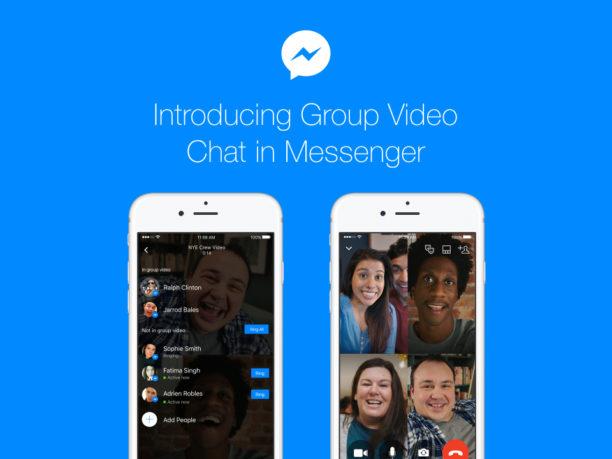Facebook video groups are rapidly emerging as de facto local newsrooms, delivering livestreams of city council meetings, weather emergencies, school board showdowns, and neighborhood incidents to audiences that once relied on community newspapers and TV. Fueled by the platform’s emphasis on video and the stickiness of Groups, these ad hoc channels are becoming daily fixtures for residents seeking fast, hyperlocal information.
The shift highlights both the vacuum left by shrinking local newsrooms and the appeal of real-time, mobile-first updates. It also raises familiar platform-era questions: who verifies what’s posted, what happens when moderators become gatekeepers, and how sustainable is a news ecosystem tethered to Facebook’s algorithms and policies? As view counts climb and memberships swell, Facebook video groups are testing the boundaries of community reporting-offering immediacy and reach, but inviting scrutiny over accuracy, accountability, and influence.
Table of Contents
- Facebook video groups become local news lifelines as live streams replace scanner chatter
- Volunteer moderators act like assignment editors vetting tips footage and false claims in real time
- Recommendations for officials and outlets engage openly publish clear verification protocols label corrections and archive videos for accountability
- Key Takeaways
Facebook video groups become local news lifelines as live streams replace scanner chatter
As police radio encryption expands and newsroom budgets shrink, neighborhood-based Facebook video groups are filling the real-time information gap with phone-in-hand live streams that alert residents to fires, crashes, weather threats, and police activity in minutes, not hours. Volunteer admins now function like assignment editors-pinning verified posts, coordinating angles across multiple streamers, and flagging rumors for removal-while local officials increasingly use comment threads to issue statements or correct inaccuracies. The shift has turned algorithm-driven feeds into de facto breaking news desks, blending citizen footage with rapid on-the-ground updates, though it also raises questions over safety, privacy, and the monetization of crisis content through stars, ads, and shares. In many towns, these pages now outperform legacy outlets on reach during emergencies, reshaping how communities stay informed, mobilize resources, and hold authorities to account.
- Speed: Live streams deliver street-level updates before official press releases or traditional broadcasts.
- Verification: Admins deploy location tags, cross-camera checks, and timestamps to reduce misinformation.
- Access shift: Scanner chatter once fed tip lines; now encrypted channels push audiences to public video feeds.
- Safety & ethics: Streamers navigate police lines, victim privacy, and platform policies in volatile scenes.
- Civic impact: Threads double as coordination hubs for detours, shelter offers, and eyewitness requests.
Volunteer moderators act like assignment editors vetting tips footage and false claims in real time
Across city-focused Facebook video groups, unpaid admins now run what amounts to a pop-up newsroom, triaging a constant stream of clips, witness accounts, and rumors with the speed of a breaking desk; they sift through submissions, tag by neighborhood, compare footage against scanner traffic and weather data, call local agencies for on-record confirmation, and hold posts in queue until verification thresholds are met-flagging potential misinformation, blurring faces or plates when safety is at stake, and posting time-stamped updates as facts are confirmed or corrected.
- Intake and triage: DM tips and post-approval queues sorted by urgency, geography, and public-safety relevance.
- Provenance checks: Landmarks, EXIF remnants, shadows and weather, cross-matched with live scanner logs and official alerts.
- Harm review: Content warnings, selective blurring, withholding exact locations for active scenes or vulnerable subjects.
- Cross-corroboration: Require second angles, contact nearby businesses, compare timestamps, solicit eyewitness clarifications.
- Transparent outcomes: Pin confirmed updates, label corrections, archive debunked claims, and document moderator decisions in public comment trails.
Recommendations for officials and outlets engage openly publish clear verification protocols label corrections and archive videos for accountability
As neighborhood video groups become real-time news desks, public agencies and publishers can strengthen credibility by embedding transparency into every post, making each clip traceable, correctable, and preserved for review.
- Open engagement: use verified spokesperson accounts, schedule Q&As in groups, and attach source notes and contact emails to every briefing video.
- Verification protocols: publish a visible checklist covering original source, location/time confirmation, chain-of-custody, edits, and AI/filters; pin logs in comments and offer downloadable audit files.
- Correction labels: apply conspicuous banners and on-video lower-thirds stating what changed, when, and why; keep posts live with a version history instead of deleting.
- Archival standards: mirror files to public repositories with stable URLs, retain metadata, timestamp in UTC, and provide captions/transcripts for accessibility and search.
- Crisis workflow: pre-authorize rapid updates, maintain an editor on call, and coordinate with group admins for cross-post alerts and takedowns that include public rationales.
- Data transparency: publish moderation/removal reports and appeals outcomes; offer a public index or API of verified clips and sources.
- Community safeguards: add advisories for sensitive content, blur victims when appropriate, translate key notices, and maintain a vetted contributor list with clear ethics rules.
Key Takeaways
As shrinking newsrooms leave gaps in civic coverage, Facebook video groups have moved quickly to fill the void-streaming public meetings, posting breaking updates, and inviting residents to participate in real time. Their speed and reach are clear; their standards and staying power are still being tested.
What comes next will hinge on trust and durability: consistent verification, active moderation, transparent sourcing, and resilience to platform policy and algorithm shifts. Partnerships with local institutions and news outlets, along with support for creators and moderators, could strengthen these pop-up newsrooms. Without that scaffolding-and without attention to access and misinformation risks-the model could prove fragile. For now, Facebook’s video groups are reshaping how communities gather and share local information, and setting the terms of the next phase of neighborhood news.


